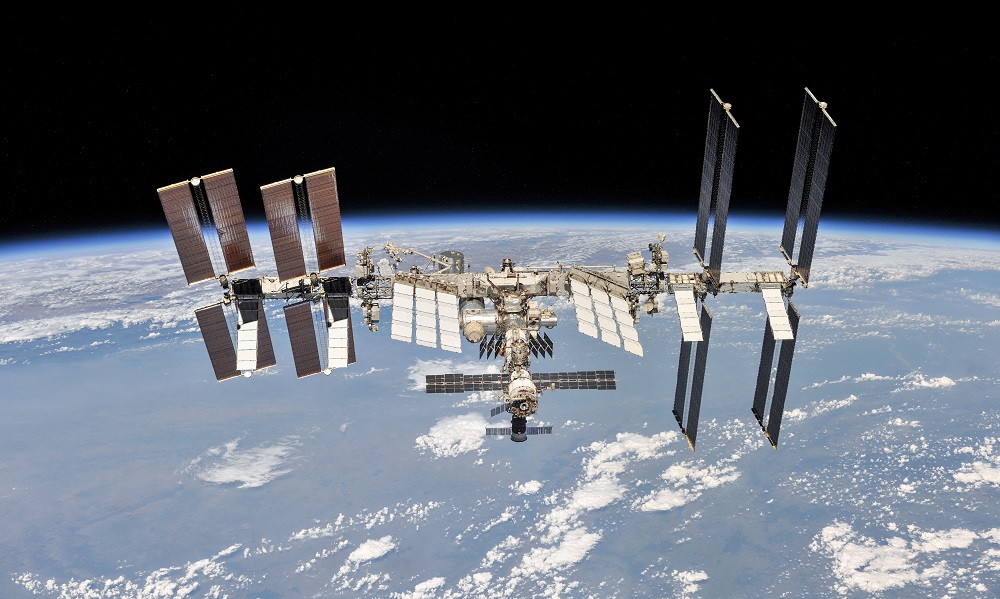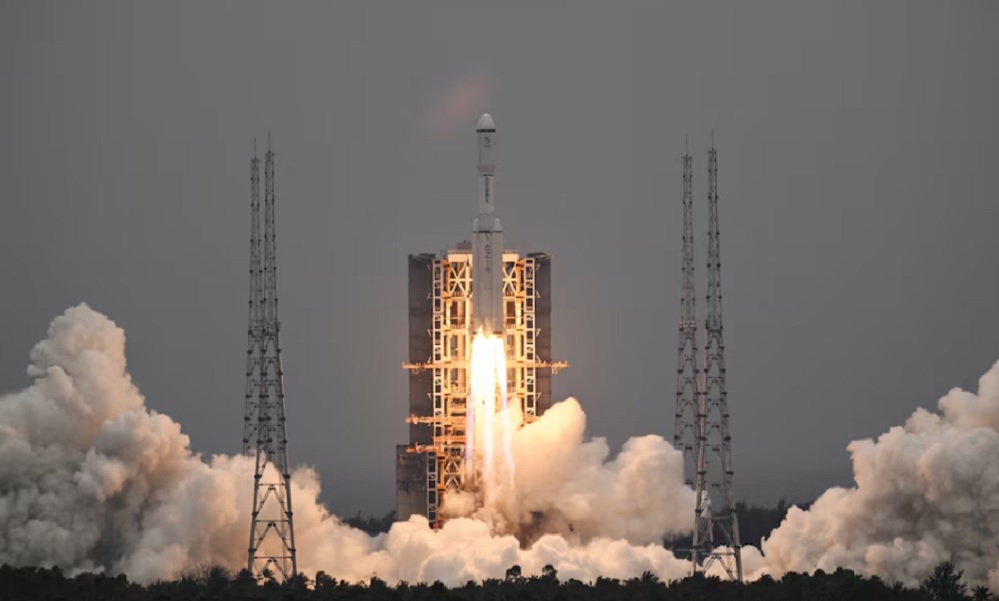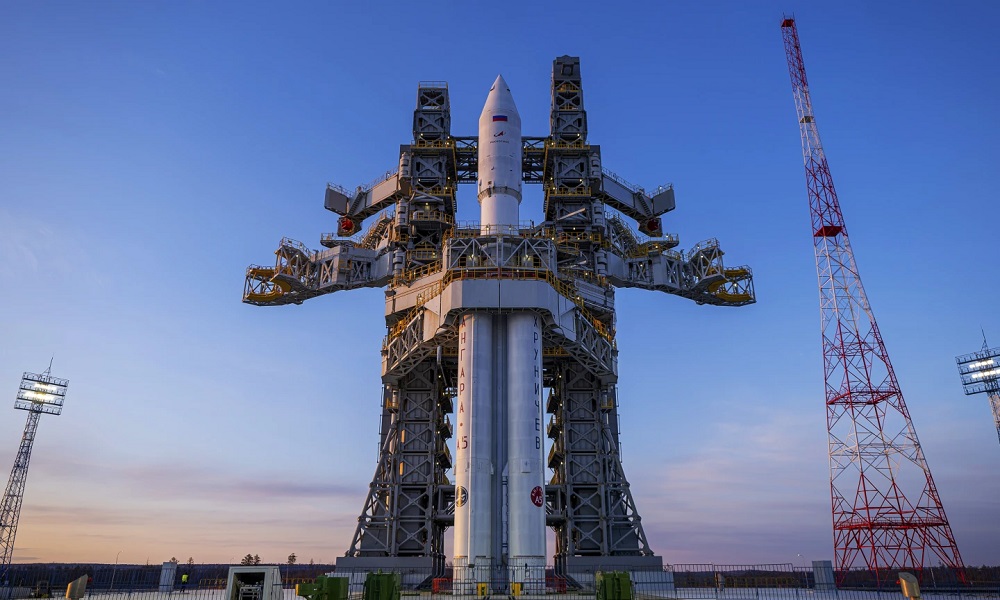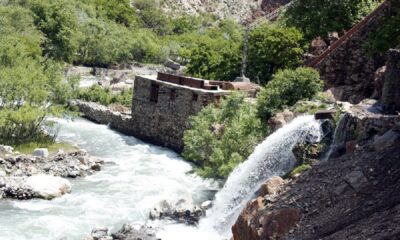Science & Technology
Scientists document how space travel messes with the human brain

Space can be an unfriendly place for the human body, with microgravity conditions and other factors tampering with our physiology, from head to toe – head, of course, being a primary concern.
A new NASA-funded study provides a deeper understanding of the issue. Researchers said on Thursday that astronauts who traveled on the International Space Station (ISS) or NASA space shuttles on missions lasting at least six months experienced significant expansion of the cerebral ventricles – spaces in the middle of the brain containing cerebrospinal fluid, Reuters reported.
This colorless and watery fluid flows in and around the brain and spinal cord. It cushions the brain to help protect against sudden impact and removes waste products.
Based on brain scans of 30 astronauts, the researchers found that it took three years for the ventricles to fully recover after such journeys, suggesting that an interval of at least that duration would be advisable between longer space missions.
“If the ventricles don’t have sufficient time to recover between back-to-back missions, this may impact the brain’s ability to cope with fluid shifts in microgravity. For example, if the ventricles are already enlarged from a previous mission, they may be less compliant and/or have less space to expand and accommodate fluid shifts during the next mission,” said University of Florida neuroscientist Heather McGregor, lead author of the study published in the journal Scientific Reports.
Age-related ventricular enlargement – caused not by microgravity but by brain atrophy – can be associated with cognitive decline.
“The impact of ventricular expansion in space travelers is not currently known. More long-term health follow-up is needed. This ventricular expansion likely compresses the surrounding brain tissue,” University of Florida applied physiology and kinesiology professor and study senior author Rachael Seidler said.
The absence of Earth’s gravity modifies the brain.
“This seems to be a mechanical effect,” Seidler said. “On Earth, our vascular systems have valves that prevent all of our fluids from pooling at our feet due to gravity. In microgravity, the opposite occurs – fluids shift toward the head. This headward fluid shift likely results in ventricular expansion, and the brain sits higher within the skull.”
The study involved 23 male and seven female astronauts – average age around 47 – from the U.S., Canadian and European space agencies. Eight traveled on space shuttle missions of about two weeks. Eighteen were on ISS missions of about six months and four on ISS missions of about a year.
Little to no ventricular volume change occurred in astronauts after short missions. Enlargement occurred in astronauts after missions of six months or longer, though there was no difference in those who flew for six months compared to those who did so for a year.
“This suggests that the majority of ventricle enlargement happens during the first six months in space, then begins to taper off around the one-year mark,” McGregor said.
The fact that enlargement did not worsen after six months could be good news for future Mars missions on which astronauts may spend two years in microgravity during the journey.
“This preliminary finding is promising for astronaut brain health during long-duration missions, but it’s still important that we examine MRI data from a larger group of astronauts and following even longer missions,” McGregor said.
The absence of enlargement following short flights was good news for people who may consider short space tourism jaunts, Seidler added, as that industry develops.
Microgravity conditions also cause other physiological effects due to the reduced physical load on the human body. These include bone and muscle atrophy, cardiovascular changes, issues with the balance system in the inner ear and a syndrome involving the eyes. Elevated cancer risk from the greater exposure to solar radiation that astronauts may encounter the further they travel from Earth is another concern.
Science & Technology
Apple loses top phonemaker spot to Samsung as iPhone shipments drop, IDC says

Apple’s (AAPL.O), opens new tab smartphone shipments dropped about 10% in the first quarter of 2024, hurt by intensifying competition by Android smartphone makers aiming for the top spot, data from research firm IDC showed on Sunday.
Global smartphone shipments increased 7.8% to 289.4 million units during January-March, with Samsung (005930.KS), opens new tab, at 20.8% market share, clinching the top phonemaker spot from Apple, Reuters reported.
The iPhone-maker’s steep sales decline comes after its strong performance in the December quarter when it overtook Samsung as the world’s No.1 phone maker. It’s back to the second spot, with 17.3% market share, as Chinese brands such as Huawei gain market share.
Xiaomi, one of China’s top smartphone makers, occupied the third position with a market share of 14.1% during the first quarter, read the report.
South Korea’s Samsung, which launched its latest flagship smartphone lineup – Galaxy S24 series – in the beginning of the year, shipped more than 60 million phones during the period.
Global sales of Galaxy S24 smartphones jumped 8%, compared to last year’s Galaxy S23 series during their first three weeks of availability, data provider Counterpoint previously said.
In the first quarter, Apple shipped 50.1 million iPhones, down from 55.4 million units it shipped same period last year, according to IDC.
Apple’s smartphone shipments in China shrank 2.1% in the final quarter of 2023 from a year earlier.
The drop underscores the challenges facing the U.S. firm in its third biggest market, as some Chinese companies and government agencies limit employees’ use of Apple devices, a measure that mirrors U.S. government restrictions on Chinese apps on security grounds.
The Cupertino, California-based company in June will hold its Worldwide Developers Conference (WWDC), where it will highlight updates to the software powering iPhones, iPads, and other Apple devices.
Investors are closely watching for updates on artificial intelligence development at Apple, which has so far spoken little about incorporating the AI technology into its devices. The company earlier this year lost the crown as the world’s most valuable company to Microsoft (MSFT.O), opens new tab, Reuters reported.
Science & Technology
China launch of relay satellite Queqiao-2 for lunar probe mission successful

China National Space Administration (CNSA) said on Friday its launch of a key signal relay satellite was a “complete success” and it would serve as the communication bridge for its future lunar probe missions for years to come, state media reported.
China launched the satellite Queqiao-2, which was named after a mythological bridge made of magpies, and two miniature satellites, Tiandu-1 and Tiandu-2, on March 20.
Queqiao-2 will be used as a communications bridge between the ground operations on earth and upcoming lunar probe missions on the far side of the moon until at least 2030.
The moon’s near side always faces earth. That means data transfers from the far side are impossible because there is no direct line of sight.
Queqiao-2 researcher and developer Xiong Liang described the satellite as “the main switch” of the whole fourth phase of lunar missions, according to state television CCTV.
“Only when the main switch is flipped on, all the communications can kick off,” Xiong said.
Queqiao-2 will orbit the moon and relay signals to and from the Chang’e-6 mission, which expected to be launched in May. The robotic Chang’e-6 probe will seek to retrieve samples from an ancient basin, acquiring lunar material from the moon’s hidden side for the first time.
Queqiao-2 will also be used as a relay platform for the Chang’e-7 lunar mission in 2026 and the Chang’e-8 mission in 2028.
The functions and performance of Queqiao-2 met mission requirements and it will be able to provide relay communication services for China’s lunar exploration projects and future lunar missions for China and other countries, said the CNSA, according to CCTV.
Queqiao-2 entered its targeted elliptical orbit on April 2 after a correction midway, near-moon braking and orbital manoeuvre around the moon, CNSA said.
The satellite has successfully communicated with Chang’e 4, which was the first spacecraft to perform a soft landing on the far side of the moon and is still carrying out its exploration mission. It also communicated with the Chang’e-6 probe while it is still on the ground earlier this month.
The successful launch of Queqiao-2 comes after the failed launch of another lunar spacecraft DRO-A/B satellites, which was intended to enter the moon’s distant retrograde orbit (DRO).
China has not released any information on whether or not the satellites can be retrieved.
(Reuters)
Science & Technology
Russia aborts planned test launch of new heavy-lift space rocket

Russian space officials on Tuesday aborted the test launch of a new heavy-lift rocket from its far-eastern launch pad.
The Angara-A5 rocket was scheduled to lift off from the Vostochny space launch facility at 0900 GMT Tuesday, but the launch was aborted two minutes before, AP reported.
Yuri Borisov, head of Roscosmos state space corporation, said the automatic safety system canceled the launch after registering a flaw in the oxidizer tank pressurization system.
He said the next launch attempt was set for Wednesday.
Tuesday’s launch was to be the fourth for the Angara-A5, a heavy-lift version of the new Angara family of rockets that has been developed to replace the Soviet-designed Proton rockets.
-

 Latest News4 days ago
Latest News4 days agoPakistan’s frontiers minister stresses ‘dignified’ return of Afghan refugees
-

 Regional3 days ago
Regional3 days agoIranian president lands in Pakistan for three-day visit to mend ties
-

 Climate Change4 days ago
Climate Change4 days agoMassive river flooding expected in China, threatening millions
-

 Latest News4 days ago
Latest News4 days agoChinese keen to invest in Panjshir-Kabul water conduit project
-

 Latest News2 days ago
Latest News2 days agoRashid Khan named AWCC’s brand ambassador
-

 World4 days ago
World4 days agoTwo Japan navy helicopters crash, one body found, 7 missing
-

 Sport3 days ago
Sport3 days agoKolkata beat Bengaluru by one run in IPL as Kohli fumes at dismissal
-

 Sport3 days ago
Sport3 days agoACL: Aino Mina 3-0 Istiqlal Kabul; Attack Energy 3-0 Khadim
























